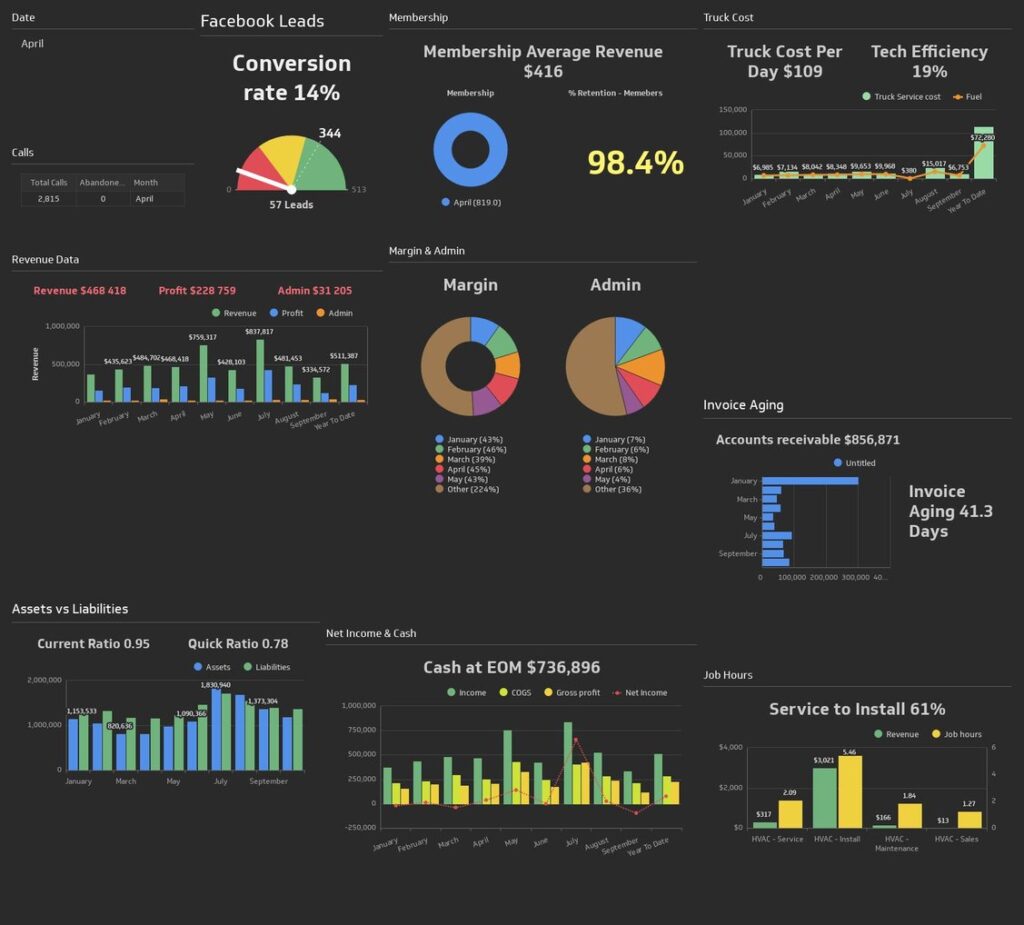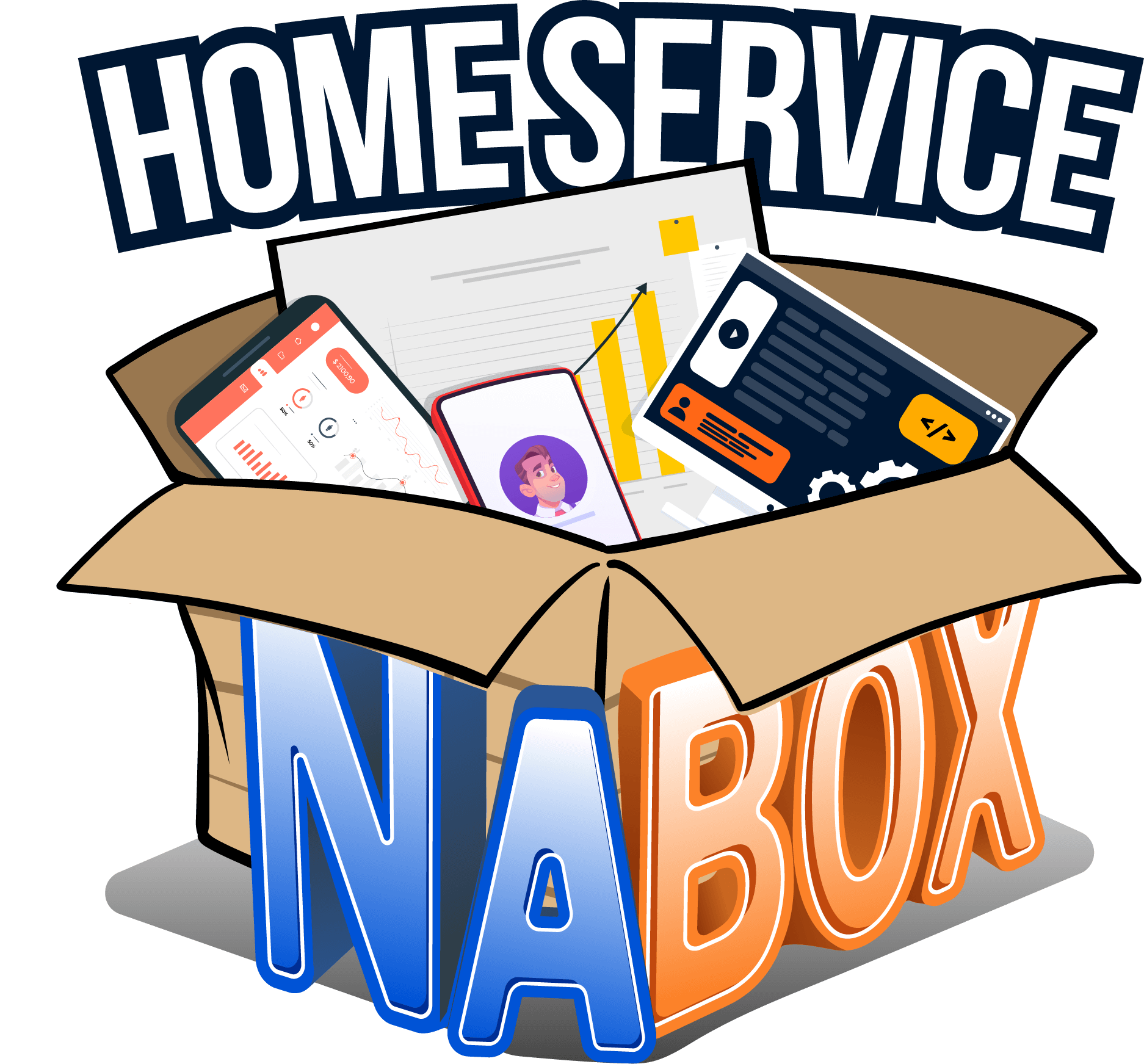
In today’s competitive business landscape, leveraging data-driven insights is crucial for making informed decisions and achieving success. By utilizing data, businesses can gain a comprehensive understanding of their operations, identify opportunities for growth, and make strategic decisions that drive performance. In this blog, we’ll explore how data-driven insights can transform your business, particularly in the home service industry.
Key Points Covered 📌
- Definition and importance of data-driven insights
- Key benefits of leveraging data in business
- Essential steps to implement a data-driven approach
- Comparative analysis of data-driven vs. intuition-based decision making
- Proactive business solutions for leveraging data
- Fun facts about data-driven decision making
- FAQs addressing common concerns
What Are Data-Driven Insights? 🧠
Data-driven insights are conclusions drawn from analyzing data sets to inform business decisions. These insights enable companies to base their strategies on concrete evidence rather than intuition or guesswork. By leveraging data, businesses can optimize their operations, improve customer experiences, and enhance overall performance.
Why They Matter:
- Enhanced decision-making: Make informed decisions based on accurate data.
- Increased efficiency: Identify inefficiencies and areas for improvement.
- Competitive advantage: Stay ahead of competitors by leveraging unique insights.
- Better customer understanding: Gain deeper insights into customer behaviors and preferences.

Benefits of Leveraging Data-Driven Insights 🌟
1. Improved Operational Efficiency 🛠️
How It Works: Analyze operational data to identify bottlenecks and streamline processes.
Benefits:
- Reduced waste: Minimize inefficiencies and optimize resource allocation.
- Enhanced productivity: Improve workflow and increase output.
2. Enhanced Financial Management 💵
How It Works: Utilize financial data to manage budgets, forecast revenues, and control costs.
Benefits:
- Cost control: Identify areas for cost reduction and optimize spending.
- Revenue growth: Uncover new revenue opportunities and improve profitability.
3. Better Customer Insights 😊
How It Works: Collect and analyze customer data to understand preferences and behaviors.
Benefits:
- Personalized experiences: Tailor services to meet customer needs and increase satisfaction.
- Customer retention: Identify and address issues to improve loyalty and reduce churn.
4. Strategic Growth 🚀
How It Works: Use data to identify market trends and opportunities for expansion.
Benefits:
- Informed planning: Base growth strategies on reliable data and market analysis.
- Risk management: Anticipate challenges and develop contingency plans.
5. Performance Tracking 📊
How It Works: Monitor key performance indicators (KPIs) to track progress and adjust strategies.
Benefits:
- Goal alignment: Ensure that all business activities are aligned with strategic objectives.
- Continuous improvement: Regularly assess performance and implement improvements.

Comparative Table: Data-Driven vs. Intuition-Based Decision Making
| Aspect | Data-Driven Decision Making | Intuition-Based Decision Making |
| Approach | Evidence-based and analytical | Gut feeling and experience |
| Accuracy | High (Based on concrete data) | Variable (Can be subjective) |
| Consistency | Consistent and replicable | Inconsistent and variable |
| Risk Management | Identifies and mitigates risks early | Often reactive to risks |
| Resource Allocation | Optimized based on data insights | May be haphazard or biased |
Proactive Business Solutions
Implementing a data-driven approach can significantly enhance your business operations. Utilizing tools like FinOps Scorecards can help you track and manage financial performance effectively. Additionally, On-Site Full Service Business Assessments provide tailored insights and strategies to optimize your business operations. For personalized advice and support, contact us.

Fun Facts 🎉
- Businesses that use data-driven decision making are 23 times more likely to acquire customers.
- Data-driven companies are 6% more profitable than their competitors.
- 91% of companies believe that data-driven decision making is crucial to their business growth.
- Using data analytics can improve marketing ROI by 15-20%.
- The concept of data-driven decision making has been around since the 1960s, but it has gained significant traction with the advent of big data and advanced analytics.
FAQs
1. What are data-driven insights?
Data-driven insights are conclusions drawn from analyzing data sets to inform business decisions. These insights enable companies to base their strategies on concrete evidence rather than intuition.
2. Why is data-driven decision making important?
Data-driven decision making is important because it enhances accuracy, consistency, and efficiency in business operations. It allows businesses to make informed decisions based on reliable data.
3. How can I start leveraging data-driven insights in my business?
Start by collecting relevant data from your operations, customers, and market. Use analytical tools to process and analyze this data, and base your decisions on the insights gained. Regularly review and adjust your strategies based on new data.
4. What tools can help with data-driven decision making?
Tools like FinOps Scorecards can help track financial performance, while On-Site Full Service Business Assessments provide comprehensive insights into your business operations.
5. How often should I review my data and insights?
It’s recommended to review your data and insights regularly, at least monthly. More frequent reviews (weekly or bi-weekly) can help ensure that your strategies remain aligned with your business goals and market conditions.
Leveraging data-driven insights is a powerful strategy that can propel your business to success. By making informed decisions based on accurate data, you can optimize your operations, enhance customer satisfaction, and achieve sustainable growth. To learn more about how to implement data-driven strategies and optimize your operations, visit our homepage.
